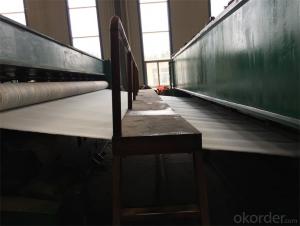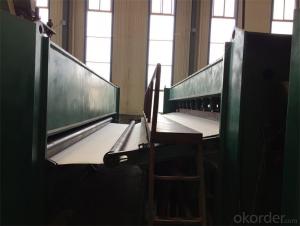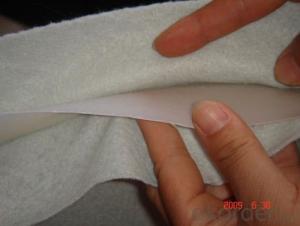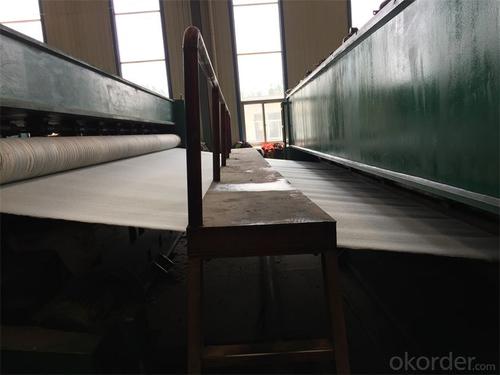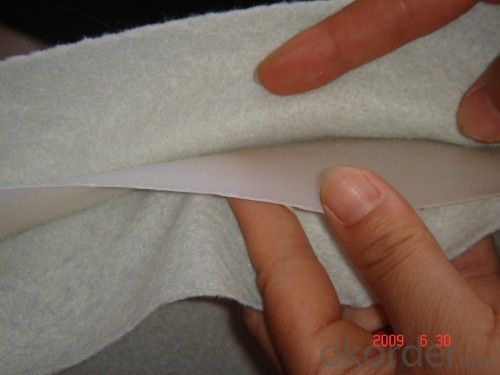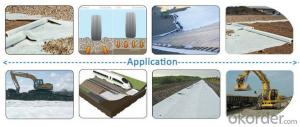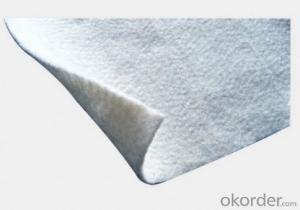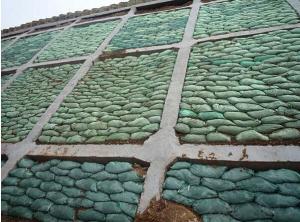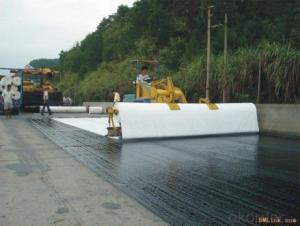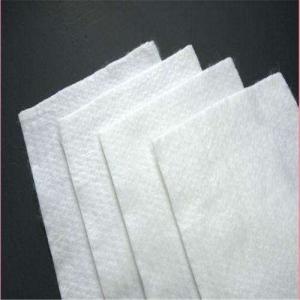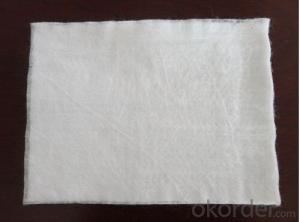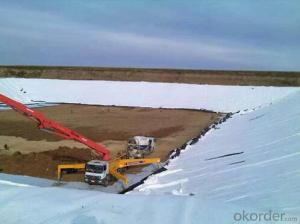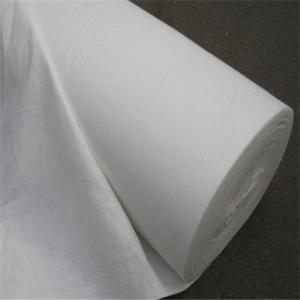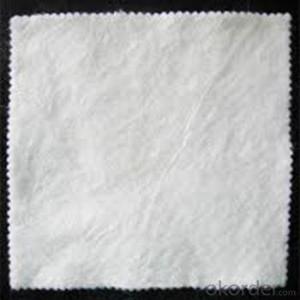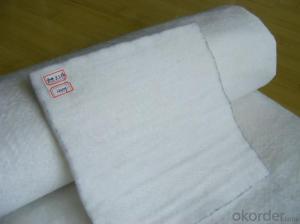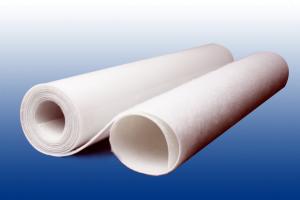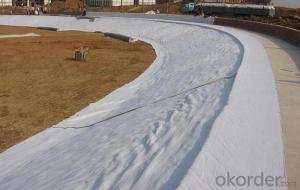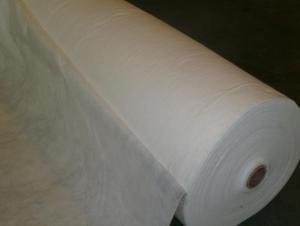Geotextile Surabaya - High Quality PP/PET Non Woven Geotextile for Road Construction
- Loading Port:
- Qingdao
- Payment Terms:
- TT or LC
- Min Order Qty:
- 5000 m²
- Supply Capability:
- 100000 m²/month
OKorder Service Pledge
OKorder Financial Service
You Might Also Like
1. Specifications of Non Woven Geotextile
1) Weight / Mass: 100g/m2-1500g/m2 .
2) Width: Within 8 m (1m-8m as request ).
3) Length: 50m-100m/roll (as request).
4) Material: PP / PET .
5) Certificate: CE/ISO9001/ISO14001
6) Manufacturing method: nonwoven / woven.
2. Features of Non Woven Geotextile
1) Short Fiber Geotextile
The geotextile is made of polypropylene staple fibers on cross-laying equipment and needle punched equipment.
It owns the advantages of acid and alkali resistance, erosion resistance, aging resistance, large strength, stable size, good filtrability etc.
2) Filament geotextile:
Filament geotextile has features as follows: High strength, good capacity of elongation and high biology tolerance, alkali tolerance, acidity tolerance, weather resistance good filtration and fine drainage capacity etc. Also it is of low cost, easy in construction and use effects.
3. Application of Non Woven Geotextile
1) artificial filling foundation movement of ground water.
2) gravel filter layer surrounding the periphery of the drain pipe drain.
3) in water conservancy projects wells, relief wells or inclined pipe filter.
4) for retaining wall backfill reinforcement, or for anchored retaining wall panel.
5) reinforced flexible pavements, crack repair roads, prevent the reflection cracks of pavement.
6) in ternal vertical or horizontal drainage, dissipation of pore water pressure in soil.
7) water impermeable geomembrane dam or embankment in the lower part of the back or the concrete.
8) the isolation layer between the road ballast and subgrade, isolation layer or between the embankment and soft foundation.
9) the isolation layer soil between highway, airport, railway ballast and artificial rockfill and soil fabric.
3. Product Show of Non Woven Geotextile
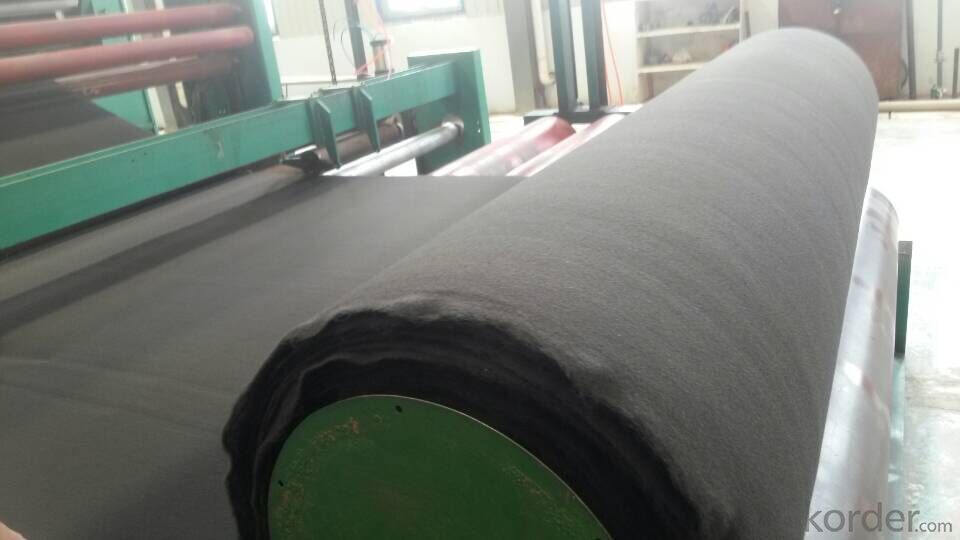

FAQ of our geotextile:
- Q: What can we do for the special customer?
A: Provide custom made service with customer's drawing; We make sure to provide you with the best solutions for your individual case. Whether standard items or non-standard items.
- Q: What can we supply?
A: We provide high levels of communication from start to finish.
- Q: What is our advantage?
A: Top Cemented Carbide has extensive business experience, Fast delivery and high quality.
- Q: Geomembrane and geotextile difference?
- 1, geotextile, also known as geotextile, it is made of synthetic fiber through acupuncture or woven from the permeability of geosynthetics. Finished cloth for the cloth, the general width of 4-6 meters, the length of 50-100 meters. Geotextile is divided into a woven geotextile and non-woven geotextile. Geotextile has excellent filtration, drainage, isolation, reinforcement, anti-seepage, protection, with light weight, high tensile strength, good permeability, high temperature, anti-freeze, anti-aging, corrosion resistance. 2, geomembrane construction site geomembrane to plastic film as impermeable substrate, and non-woven composite made of soil impermeable material, its impermeability depends mainly on the plastic film impermeability. At present, domestic and foreign anti-seepage application of plastic film, mainly polyvinyl chloride (PVC) and polyethylene (PE), EVA (ethylene / vinyl acetate copolymer), they are a polymer chemical flexible material, the proportion of small, Strong extension, high adaptability to deformation, corrosion resistance, low temperature resistance, good frost resistance. The main mechanism is to plastic film impermeable barrier earth dam leakage channel, with its large tensile strength and elongation to withstand water pressure and adapt to the dam deformation; and non-woven is also a polymer short fiber chemistry Material, through the needle or hot tack forming, with high tensile strength and extensibility, it is combined with the plastic film, not only increased the tensile strength of plastic film and anti-puncture ability, and because the non-woven surface rough , Which increases the friction coefficient of the contact surface, which is favorable to the stability of the composite geomembrane and the protective layer. At the same time, they have good resistance to bacteria and chemical resistance, not afraid of acid, alkali, salt erosion.
- Q: What is the geotextile customs code?
- Hello: I can only give an example: if you ask the goods belong to the weight per square meter of more than 150 grams of non-woven weaving, can be returned, because you do not have a detailed description of the source of raw materials, production processes, Into the product code under 5603.1410. If you are satisfied with my answer, I would like to be accepted and given praise, thank you!
- Q: How do geotextiles help in preventing soil liquefaction?
- Geotextiles help in preventing soil liquefaction by providing stability and reinforcement to the soil. They act as a barrier and restrict the movement of soil particles, thereby reducing the potential for liquefaction. Additionally, geotextiles enhance the drainage capacity of the soil, allowing water to flow through and preventing the buildup of excess pore pressure, which is a major factor leading to liquefaction.
- Q: What are the environmental benefits of using geotextiles?
- Geotextiles offer several environmental benefits, such as erosion control by stabilizing soil and preventing sediment runoff, enhancing water filtration and drainage systems, reducing the need for chemical herbicides and pesticides, and promoting the growth of vegetation. Additionally, they can help in the restoration and protection of ecosystems, reduce construction waste by extending the lifespan of infrastructure, and minimize the use of non-renewable materials like aggregates.
- Q: Measured geotextile vertical permeability, "highway engineering geosynthetics test procedures" T1141-2006 6.3 balanced head difference is not necessary to balance the 50mm? Can not balance ah more
- So deep, although we produce geotextile, but geotextile detection really is not proficient in it
- Q: What are the advantages of using geotextiles over traditional construction materials?
- There are several advantages of using geotextiles over traditional construction materials. Firstly, geotextiles are lightweight and flexible, making them easier to handle and install compared to heavy materials like concrete or steel. Secondly, geotextiles have a high strength-to-weight ratio, providing excellent reinforcement and stabilization capabilities for soil and other materials. Additionally, geotextiles are permeable, allowing for proper drainage and preventing water buildup, which can lead to erosion or structural damage. Moreover, geotextiles are resistant to biological degradation, chemicals, and UV radiation, ensuring their long-term durability. Lastly, geotextiles are cost-effective, as they require less labor and equipment for installation and maintenance compared to traditional materials. Overall, the use of geotextiles offers numerous benefits in terms of efficiency, functionality, and sustainability in construction projects.
- Q: Can geotextiles be used for reinforcement of pipeline trenches?
- Yes, geotextiles can be used for reinforcement of pipeline trenches. Geotextiles are commonly used in civil engineering projects to enhance the stability and strength of soil. In the case of pipeline trenches, geotextiles can be placed as a separation layer between the soil and the pipeline, preventing soil intrusion and providing additional support to the pipeline structure.
- Q: Geotechnical deployment of aging detection of what indicators
- Geotextile aging test: anti - ultraviolet ability. That is, at a certain temperature, the sun under the strong changes in geotextile.
- Q: What are the factors to consider when selecting geotextiles?
- When selecting geotextiles, there are several factors that should be considered. These include the intended application or project, the required strength and durability, the desired permeability and filtration properties, the site conditions and environmental factors, as well as the cost and availability of the geotextiles. It is important to choose a geotextile that is suitable for the specific requirements of the project and can effectively perform its intended function.
- Q: Polyester geotextile filter layer sets what the amount
- Polyester filament geotextile Features: Polyester filament geotextile is made by polyester method by spinning acupuncture consolidation directly made, product specifications from 80-800g / m2 arbitrary choice, it is geotechnical engineering and civil engineering In the application of a geosynthetics, polyester filament into a network and consolidation method, the fiber arranged in three-dimensional structure. In addition to good mechanical properties, but also has a good vertical and horizontal drainage performance and good extension properties and high resistance to biological, acid and alkali, anti-aging and other chemical stability. At the same time, it also has a wide pore size range, tortuous pore distribution, excellent permeability and filtration performance. Polyester filament geotextile Uses: water conservancy project dam and slope protection of the filter, channel isolation, seepage; road, rail, airport runway foundation isolation, filter, drainage, slope, retaining wall and road reinforcement, Drainage; Port Engineering soft foundation treatment, traces of the tube of the river alone sweeping the beach embankment, harbor wharf and breakwater reinforcement, drainage; polyester filament geotextile has been widely used in the field of infrastructure construction, and gradually applied In a wider area.
Send your message to us
Geotextile Surabaya - High Quality PP/PET Non Woven Geotextile for Road Construction
- Loading Port:
- Qingdao
- Payment Terms:
- TT or LC
- Min Order Qty:
- 5000 m²
- Supply Capability:
- 100000 m²/month
OKorder Service Pledge
OKorder Financial Service
Similar products
Hot products
Hot Searches
Related keywords
